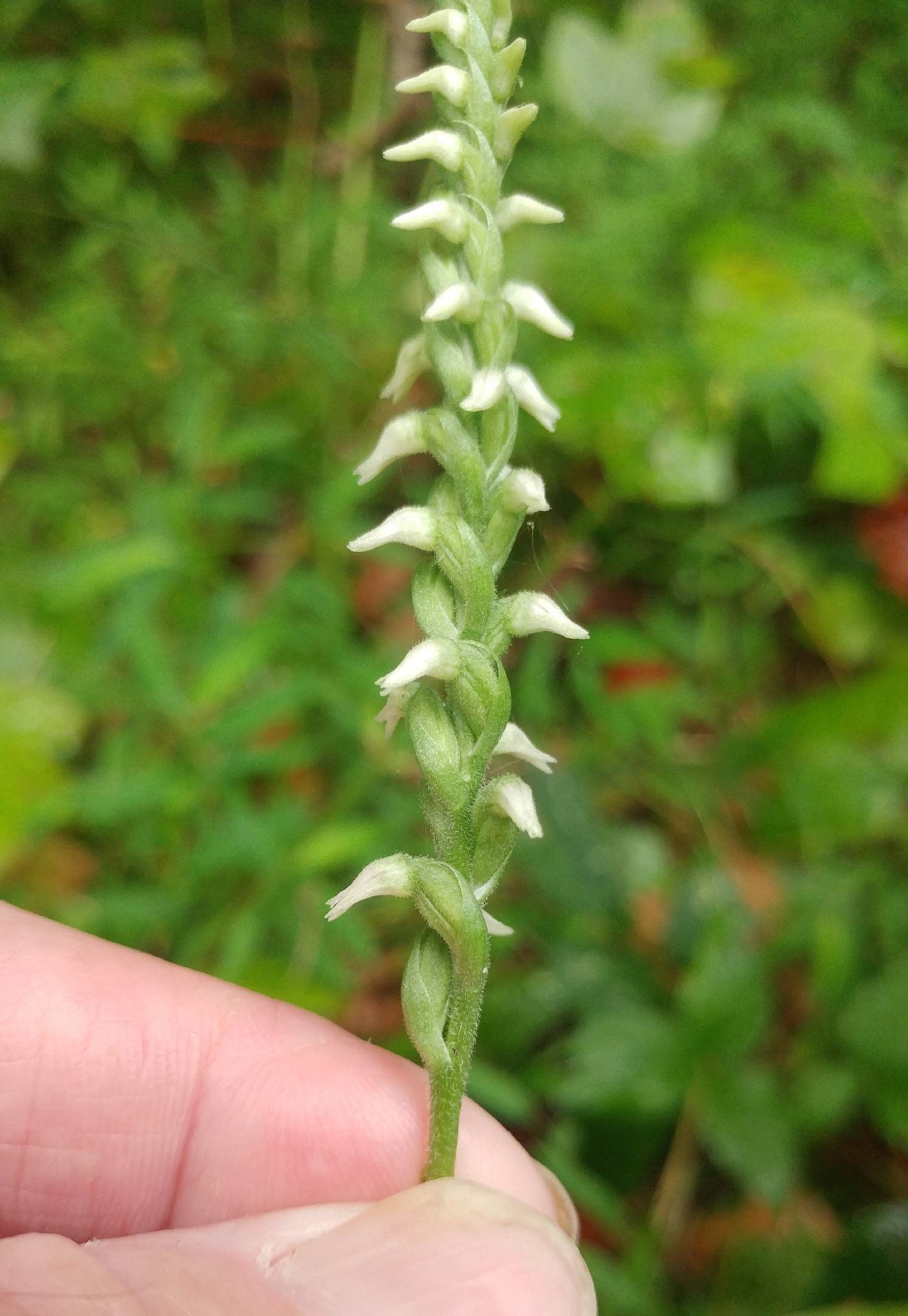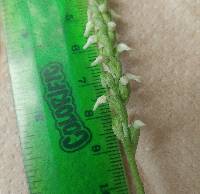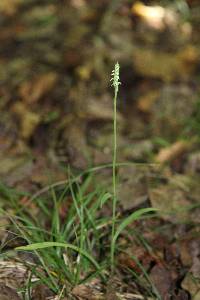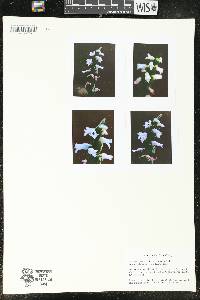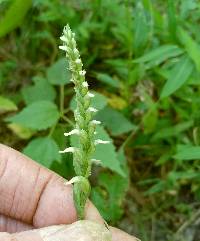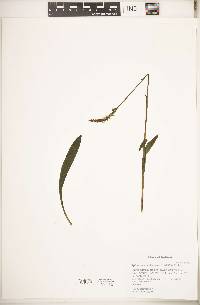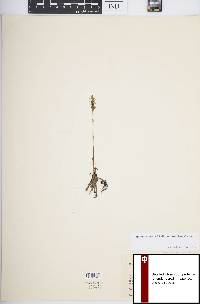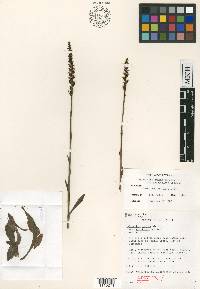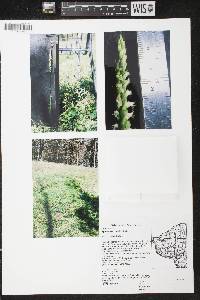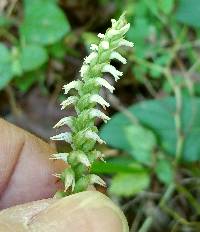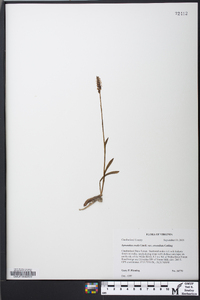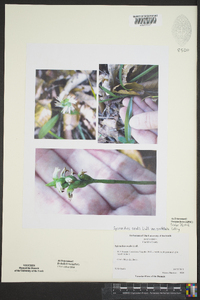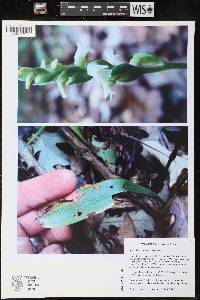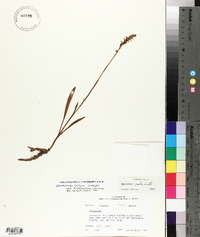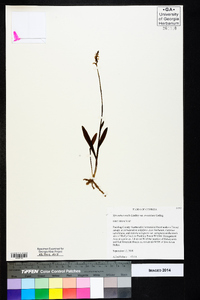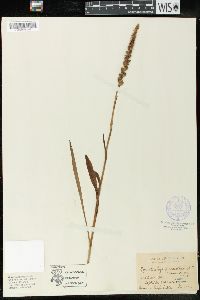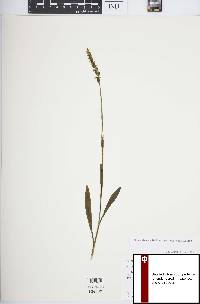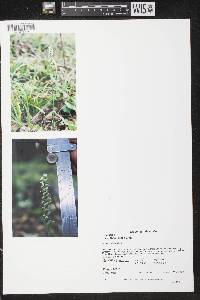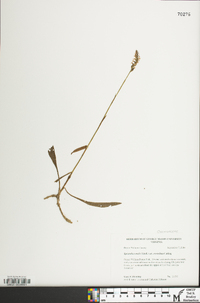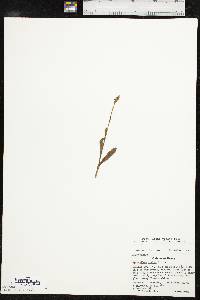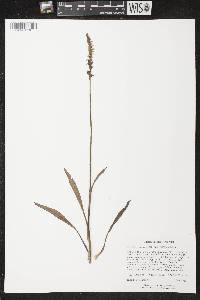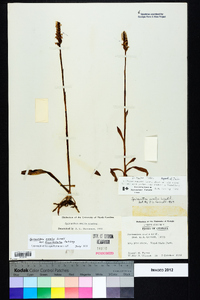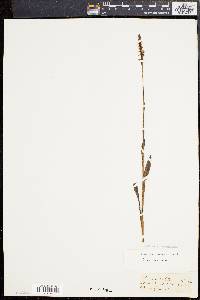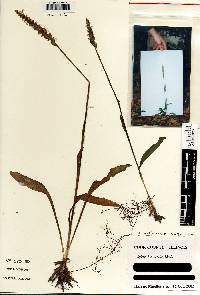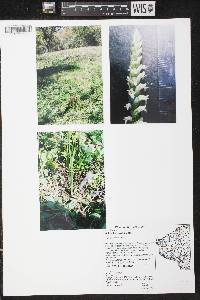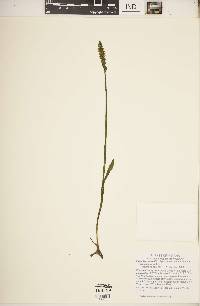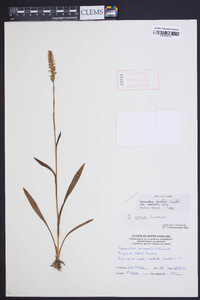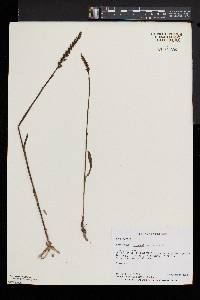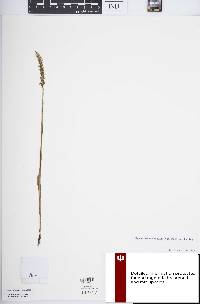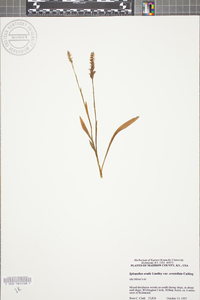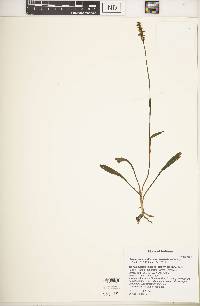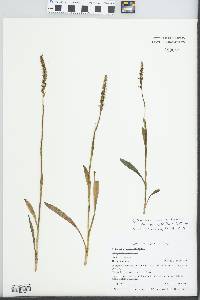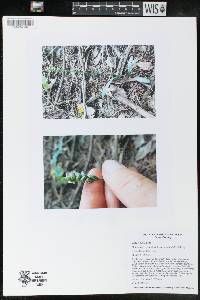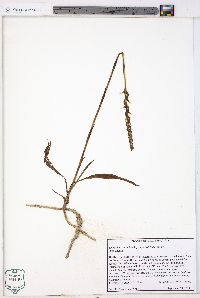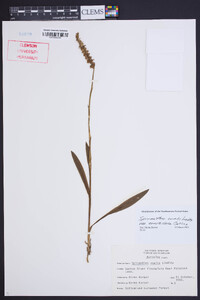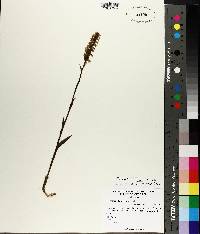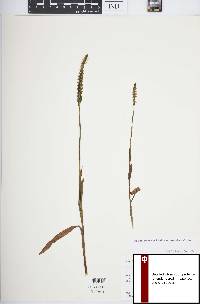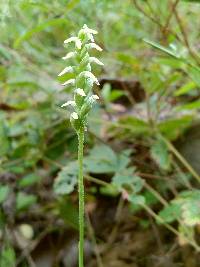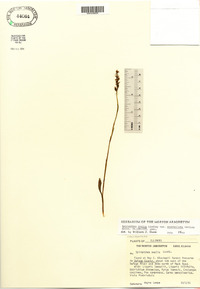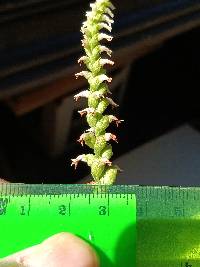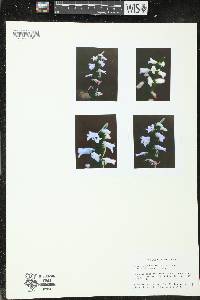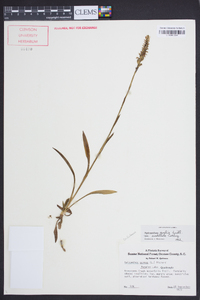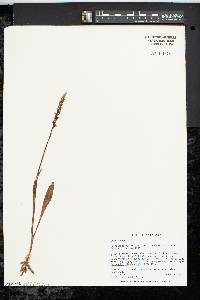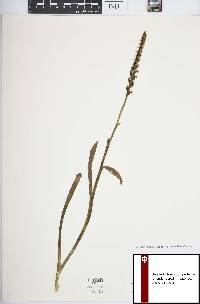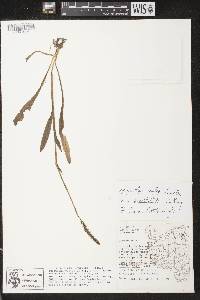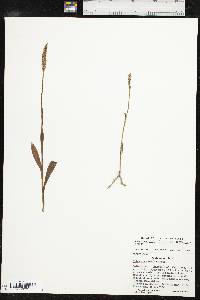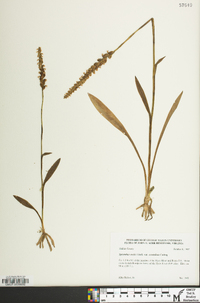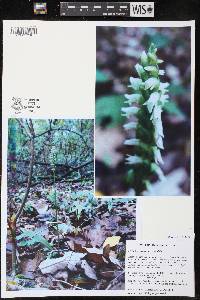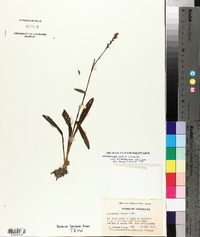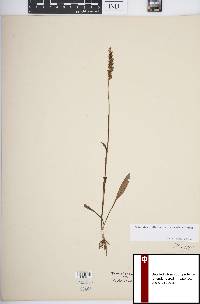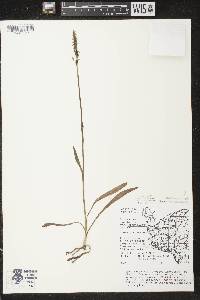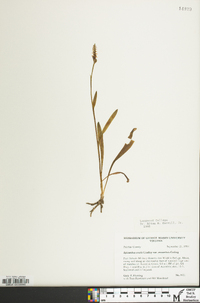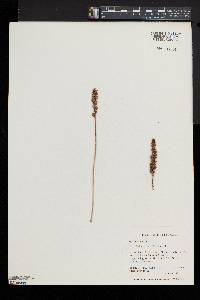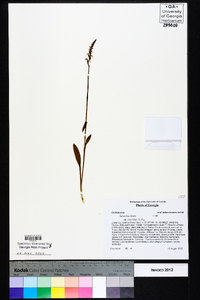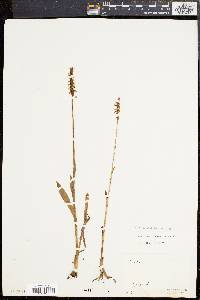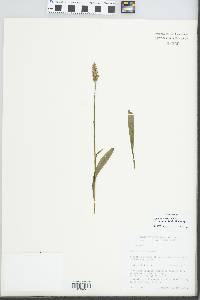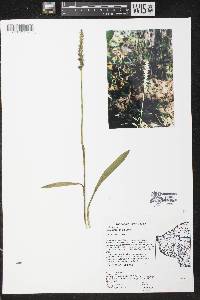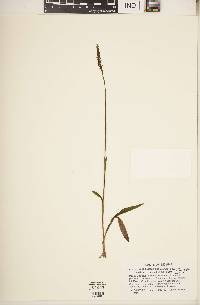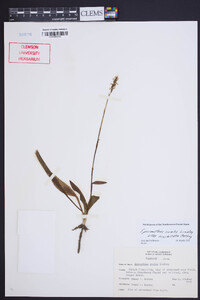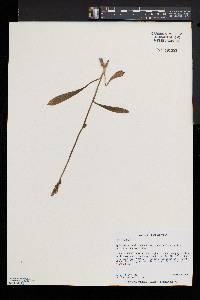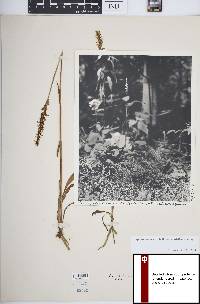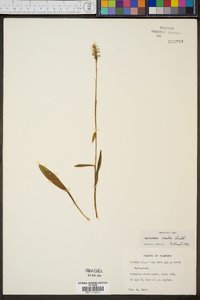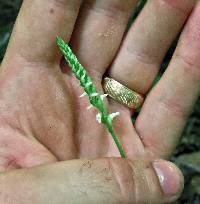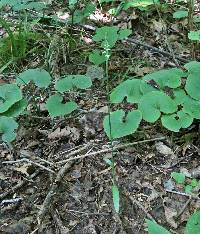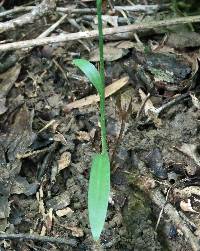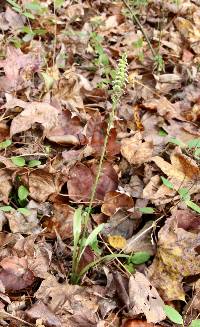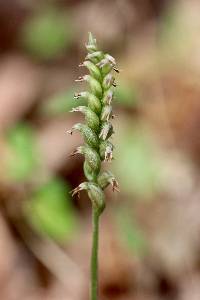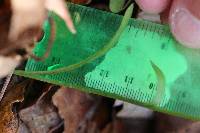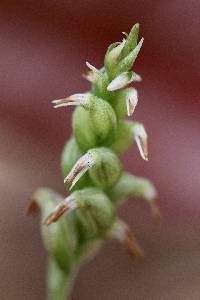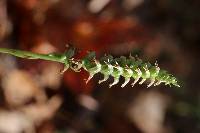
|
|
|
|
Family: Orchidaceae
October Lady's-Tresses
|
Plants allogamous. Flowers: sepals 3.5-5 mm; rostellum and viscidium absent. 2n = 30. Flowering late Aug--Oct. Moist, rich woodlands, thickets, old fields, 2d-growth woodlands, wooded hillsides; 0--900 m; Ont.; Ala., Ark., Fla., Ga., Ill., Ind., Iowa, Kans., Ky., La., Md., Mich., Miss., Mo., Ohio, Okla., N.C., Pa., S.C., Tenn., Tex., Va., W.Va. In Spiranthes ovalis var. ovalis, all plants have fully open flowers, and the ovaries swell progressively. In most plants of S. ovalis var. erostellata, the flowers are never quite fully open, and the ovaries are simultaneously swollen on each flower. Because the varieties are largely allopatric, identification can be aided by locality.
Perennial herb 5 - 40 cm tall Stem: single, erect, green, glandular-hairy, and upwards with sheaths having small, leaf-like, spreading to reflexed tips. Leaves: two or three, basal and on lower part of stem, recurved-spreading, dull bluish green, hairless, non-toothed, 7 - 15 cm long, 0.5 - 1.5 cm wide, inversely lance-shaped. The leaves usually persist through flowering time. Inflorescence: a single, erect, terminal, elongate spike of numerous, spreading to somewhat reflexed, stalkless flowers. The flowers are arranged in a tight spiral with three flowers per full turn around the axis (rarely loosely spiraled in small plants). Axis covered with stalked glandular hairs, some branched hairs, and round-tipped hairs. Flowers: pure white, bilaterally symmetric, well under 1 cm long (above ovary), not opening fully, cylindric to somewhat narrow urn-shaped with slightly inflated base (but lacking spur). The reproductive parts of stamens, stigma and style are fused into a column above the 3 - 8 mm long inferior ovary. Sepals: three, petal-like, white, 3.5 - 5 mm long, 1 - 1.5 mm wide, narrowed to pointed tips, more or less forward-pointing but slightly spreading beyond middle. Roots: few, spreading to descending, slender (up to 0.5 cm diameter). Lateral petals: two, upward curved, closely positioned to central sepal, white, 3.5 - 6 mm long, about 1 mm wide, lance-shaped with fairly pointed tips. Lip petal: one, central, lowermost, downward pointing, white (sometimes creamy near middle), hairless, finely crisped on edges, 3.5 - 5 mm long, about 3 mm wide, egg-shaped with rounded tip. There are a few parallel-branching veins along the lip, and also two, slender, short (to 0.75 mm), spreading, basal projections (calli). Similar species: Spiranthes ovalis var. erostellata is the only variety of this species in the Chicago Region since the typical variety only occurs in much more southern states (AL, AR, FL, GA, LS, MS, TX). The two varieties can be difficult to differentiate morphologically, but in general the typical variety has all flowers on all plants fully open, where as in S. ovalis var. erostellata the flowers almost never fully open. In our area one may confuse this species with small plants of S. cernua, but the flowers of that species are more clear white, the flowers are larger (0.8 - 1.1 cm long) and usually somewhat nodding, the lateral sepals are more closely positioned with the petals and central sepal, and the calli at the base of the lip curve inward and are larger (0.5 - 1.2 mm). Spiranthes lucida may also appear similar, but its flowers have bright yellow or orangish lip petals with green veins. Flowering: September to October Habitat and ecology: Quite rare, supposedly a true woodland species, but apparently in a range of habitats from moist rich woodlands, thickets, and old fields. Occurence in the Chicago region: native Notes: This orchid seems to be expanding its range northward (Case 1987). It is one of the latest blooming species of our Spiranthes. Etymology: Spiranthes comes from the Greek words spir meaning coiled, and anthes meaning flowers, thus referring to the spiral arrangement of the flowers in the inflorescence. Ovalis means oval, probably in reference to the leaf shape. Erostellata is a combination of ero meaning lesser, smaller, or "very rarely", and stellata means starred or star-shaped or relating to stars, together probably translating to small stars, which may reference the small bright white flowers resembling tiny stars. Author: The Field Museum From Flora of Indiana (1940) by Charles C. Deam This species is very rare throughout its range and I have found it in only two counties. One specimen is from the wooded bluff of the Ohio River on the north side of Leavenworth, Crawford County. The other was found on a low, wooded promontory in the Louis B. Wilkerson woods in sec. 3 about 7 miles southwest of Rockport, Spencer County. Here it was growing under a beech tree and also under a tulip tree. Specimens from this place supplied the photograph of this species for "Our Wild Orchids" by Morris & Eames. …… Indiana Coefficient of Conservatism: C = 3 Wetland Indicator Status: FAC |
|
|
|

